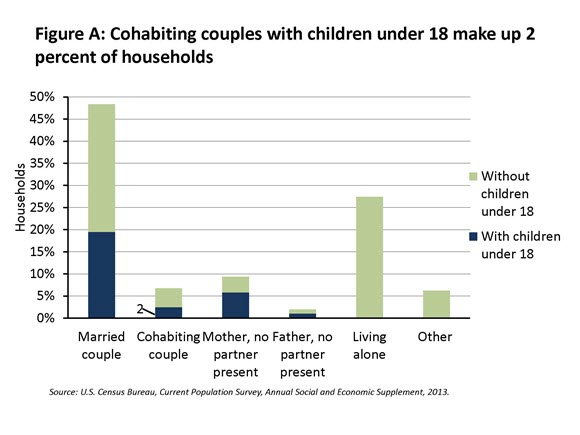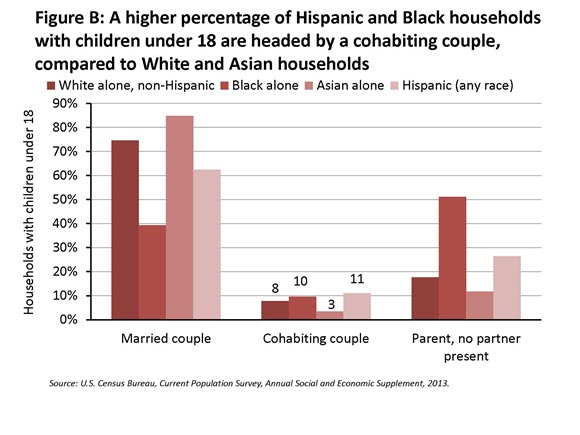Married Couples are Not the Only Type of Two-Parent Family
Married Couples are Not the Only Type of Two-Parent Family
When you think of a two-parent family, you may picture a married couple with children under 18. Although these families make up a substantial proportion of all households, at 19 percent, they are not the only type of two-parent family. Another type of family that is becoming more common is when children live with two cohabiting parents.
By cohabitation, we mean couples who are living together in a relationship as boyfriends/girlfriends, cohabiters or unmarried partners but who are not married.
Currently, cohabiting couples with children under 18 make up 2 percent of American households (see Figure A), and their numbers are growing. Between 1996 and 2013, the number of opposite-sex cohabiting couples with children more than doubled, from 1.2 to 3.1 million [XLS]. In addition, a recent study from the National Center for Health Statistics reports that [PDF] a majority (58 percent) of nonmarital births are to cohabiting women, and 22 percent of first births to women occur within cohabiting unions.
In addition, we can look at differences among race groups of cohabiting families. Among households with children under 18, those with a Hispanic or black householder are more likely to be headed by a cohabiting couple, at 11 percent and 10 percent, respectively (see Figure B), than other race groups. This living arrangement is less likely for non-Hispanic white (8 percent) and Asian (3 percent) families. In contrast, married couples with children are more common among Asian (85 percent) and non-Hispanic white (75 percent) families than among Hispanic (62 percent) or black (39 percent) families.
How do cohabiting and married couples with children compare? In 2012, married-couple families with children were better off economically, as married parents were older, better educated, and earned more than cohabiting parents. For example, 8 percent of cohabiting women with children earned $50,000 or more in 2011, compared with 18 percent of their married counterparts. This difference was even greater for cohabiting fathers (18 percent) compared with married fathers (48 percent). The estimates for married mothers and cohabiting fathers are not significantly different.





